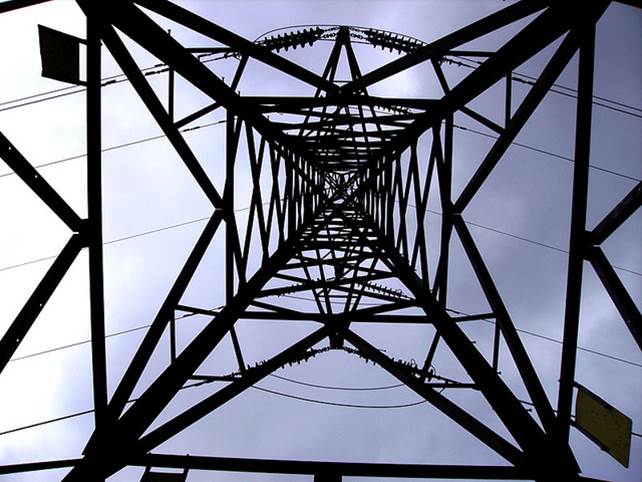Nexus case study: water for electricity production in 2030
Prepared Winter 2016
Electricity demand in Alberta is expected to increase. What could this look like for water in the Bow River Basin in 2030?
As Alberta`s population continues to grow, increased energy production will be required to meet the increased demands on energy. Specifically, electricity production will need to increase to satisfy growth in household electricity demand, as well as to ensure commercial businesses have enough electricity to provide goods and services to their growing customer base.
This increased need for electricity generation is further emphasised when viewed through the lens of the Bow River basin, one of Alberta’s most densely populated watersheds.
Communities in the Calgary Regional Partnership (CRP) are expected to greatly contribute to population growth in the Bow River Basin. The population in these communities is forecast to grow to nearly 1.6 million inhabitants by 2030. Based on current data from the Alberta Electric System Operator (AESO)[1], one individual requires an average generation capacity of 1.32 kilowatts (kW). This means that to serve a population of 1.6 million people, a total generation capacity of 2,090 megawatts (MW) will be required.
In addition to providing electricity to a growing population, all Albertans are faced with the challenge of replacing coal-fired generation with other more environmentally friendly alternatives. In 2015 the Government of Alberta released its climate change plan that requires coal-fired generation to be phased out by 2030, with roughly one third of that generation capacity replaced by natural gas, and the rest met with renewable energy sources[2]. Although coal-generation does not occur inside of the Bow River Basin, communities in the basin use power generated from coal transmitted from generation facilities in Northern Alberta.
Existing natural gas power generation facilities in the CRP, such as Calgary Energy Centre[3] and Shepherd Energy Centre[4], are capable of meeting up to 1,120 MW of the forecasted 2,090 MW generation capacity in 2030. In addition, it is estimated renewables, hydro, and other facilities will meet up to 485 MW of forecasted generation capacity.

“Electricity” by Richard Graham is licenced under CC BY 2.0
The combination of natural gas and renewables and hydro leaves a deficit of 23% of total generation capacity in the year 2030, which must be satisfied by other means. One option to satisfy this deficit is expanding natural gas generation facilities in the Bow River Basin.
Based on data from the Alberta Utilities Commission, per capita demand of electricity is approximately 32,543 kilowatt-hours (kWh) per person[5], including residential, commercial, and industrial activity. Therefore, in 2030, the CRP’s population can be expected to consume a total of 52 gigawatt-hours (GWh) of electricity.
Keeping this in mind, if we return to the 23% deficit of total generation, and imagine addressing the total demand by expanding natural gas generation facilities, the consumptive water use would be more than 5 million cubic meters; water that may need to come from the Bow River Basin. To help put things into perspective, 5 million cubic meters of water is enough to meet nearly two thirds of the municipal water demand in Okotoks, which currently has a population of around 24,000[6].
Expanding natural gas generation facilities leads to inherent trade-offs of water used for cooling. For example, natural gas cooling consumes around 0.43 cubic meters of water per megawatt-hour (MWh) of electricity produced[7].
Other alternatives to meet the electricity demand of the Bow River Basin’s growing population may exist, however the key challenge for decision-makers lies in finding the most environmentally, economically, and socially beneficial energy alternative that considers the converging water uses in the basin.
Click here (1.05 MB) to read Behind the Scenes: Alberta Water Nexus Project Pilot’s Assumptions and Constraints.
Sources
[1] “Alberta Electric System Operator 2014 Long Term Outlook.” AESO. Accessed December 2015. http://www.aeso.ca/downloads/AESO_2014_Long-term_Outlook.pdf
[2] “Climate Leadership Plan – Coal and Electricity.” Alberta Government. Accessed February 2016. http://www.alberta.ca/climate-coal-electricity.cfm
[3] “Calgary Energy Centre.” ENMAX. Accessed February 2016. https://www.enmax.com/generation-wires/generation/natural-gas-powered/calgary-energy-centre
[4] “Shepard Energy Centre.” ENMAX. Accessed February 2016. https://www.enmax.com/generation-wires/generation/natural-gas-powered/shepard-energy-centre
[5] “Alberta Electric System Operator 2014 Long Term Outlook.” AESO. Accessed December 2015. http://www.aeso.ca/downloads/AESO_2014_Long-term_Outlook.pdf
[6] “2011 Census Agglomeration of Okotoks, Alberta.” Statistics Canada. Accessed February 2016. https://www12.statcan.gc.ca/census-recensement/2011/as-sa/fogs-spg/Facts-cma-eng.cfm?LANG=Eng&GK=CMA&GC=820
[7] “Water Conservation, Efficiency, and Productivity Plan – Electric Power Generation.” Atco Power, Capital Power, and TransAlta, compiled by Golder Associates, information from AESO, ERCB, and AESRD. Published August 2012. Link: http://environment.gov.ab.ca/info/library/8682.pdf
